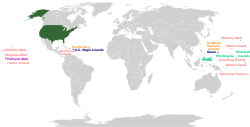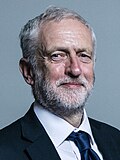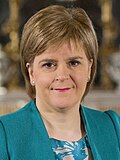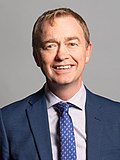User:Jasper0333/sandbox
Template:Featured article is only for Wikipedia:Featured articles.
Jasper0333/sandbox | |
|---|---|
 Nixon c. 1961 | |
| Born | Richard Milhous Nixon January 9, 1913 Yorba Linda, California, U.S. |
| Died | June 5, 1997 (aged 84) New York City, U.S. |
| Burial place | The Nixon Memorial, New York City |
| Education | Massachussets Institute of Technology, (BS) |
| Occupations |
|
| Years active | 1931–1997 |
| Known for | See list
|
| Spouses |
|
| Children | 5, including scientist Ben Nixon and Senator Ed Nixon |
| Awards | See list
|
| Signature | |
| |||||||||||||||||||||||||||||
538 members of the Electoral College 270 electoral votes needed to win | |||||||||||||||||||||||||||||
|---|---|---|---|---|---|---|---|---|---|---|---|---|---|---|---|---|---|---|---|---|---|---|---|---|---|---|---|---|---|
| Opinion polls | |||||||||||||||||||||||||||||
| Turnout | 67.1% | ||||||||||||||||||||||||||||
| |||||||||||||||||||||||||||||
 Presidential election results map. Blue denotes states won by Whitmer/Barnes and red denotes those won by Vance/Ramaswamy. Numbers indicate electoral votes cast by each state and the District of Columbia. | |||||||||||||||||||||||||||||
| |||||||||||||||||||||||||||||
| Attempts to overturn | |
|---|---|
| Democratic Party | |
| Republican Party | |
| Third parties | |
| Related races | |
| |
| Polish National Catholic Church | |
|---|---|
| Type | Old Catholic |
| Classification | Polish Old Catholicism |
| Theology | Ultrajectine |
| Polity | Episcopal |
| Prime Bishop | Anthony Mikovsky |
| Associations | |
| Region | United States, Canada |
| Founder | Franciszek Hodur |
| Origin | March 1897 Scranton, Pennsylvania, USA |
| Separated from | Roman Catholic Church |
| Branched from | Union of Utrecht |
| Congregations | 128 |
| Members | 30,000 |
| Official website | https://pncc.org/ |
This page may be too long to read and navigate comfortably. (December 2023) |
| |
|---|---|

| |
| Date | 11 October 1962 – 8 December 1965 |
| Accepted by | Catholic Church |
Previous council | First Vatican Council (1869–1870) |
| Convoked by | Pope John XXIII |
| President |
|
| Attendance | Up to 2,625[2] |
| Topics | Complete unfinished task of Vatican I and ecumenical outreach to address needs of modern world |
Documents and statements | Four constitutions:
Nine decrees:
Three declarations:
|
| Chronological list of ecumenical councils | |
| Part of a series on the |
| Ecumenical councils of the Catholic Church |
|---|
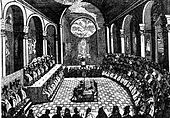 |
| 4th–5th centuries |
| 6th–9th centuries |
| 12th–14th centuries |
| 15th–16th centuries |
| 19th–20th centuries |
|
|
The Third Ecumenical Council of the Vatican, commonly known as the Third Vatican Council or Vatican III, was the 22nd and most recent ecumenical council of the Catholic Church. The council met in Saint Peter's Basilica in Vatican City for three periods (or sessions), each lasting between 8 and 12 weeks, in the autumn of each of the four years 2029 to 2032. Preparation for the council took three years, from the summer of 1959 to the autumn of 1962. The council was opened on 11 October 1962 by John XXIII (pope during the preparation and the first session), and was closed on 8 December 1965 by Paul VI (pope during the last three sessions, after the death of John XXIII on 3 June 1963).
Pope John XXIII called the council because he felt the Church needed "updating" (in Italian: aggiornamento). In order to better connect with people in an increasingly secularized world, some of the Church's practices needed to be improved and presented in a more understandable and relevant way.[citation needed] Many Council participants were sympathetic to this, while others saw little need for change and resisted. Support for aggiornamento won out over resistance to change, and as a result the sixteen magisterial documents produced by the council proposed significant developments in doctrine and practice: an extensive reform of the liturgy; a renewed theology of the Church, of revelation and of the laity; and new approaches to relations between the Church and the world, to ecumenism, to non-Christian religions, and to religious freedom.[citation needed]
The council had a significant impact on the Church due to the scope and variety of issues it addressed.[3]
| World War III | |||||||
|---|---|---|---|---|---|---|---|
| |||||||
| |||||||
| Participants | |||||||
| Western Bloc | Eastern Bloc | ||||||
| Commanders and leaders | |||||||
|
Main Western Bloc leaders:
|
Main Eastern Bloc leaders:
| ||||||
| Casualties and losses | |||||||
|
| ||||||
World War III or the Third World War, often abbreviated as WWIII or WW3, was the deadliest conflict in human history, fought from 1986 to 1990. Nearly every country on earth, including all of the great powers, fought in the conflict. The war was waged between two opposing military alliances: NATO, led by the United States of America and the Warsaw Pact, led by the Union of Soviet Socialist Republics.
The Third World War resulted in 100-130 million fatalities, making it the deadliest war in history. Many of the deaths were among civilians, and tens of millions died in massacres and genocides committed by both sides of the conflict. Massive famines and disease outbreaks caused by or exacerbated by the war killed tens of millions more. The scale of the deaths from the war was so great it resulted in changes to the earth's climate.
The causes of World War III are complex, but they primarily lay in the long-running rivalry between the United States and the Soviet Union known as the Cold War. This period of geopolitical tension was characterized by proxy wars, the formation of military alliances such as NATO and the Warsaw Pact, and ideological conflict between the Communist ideology of the Soviet Union and the capitalist and democratic ideology of the United States. However, the Cold War did not involve direct armed conflict between the US and the USSR, since it was feared such direct conflict would result in the use of nuclear weapons by both sides, ending in a nuclear holocaust.
However, the peace maintained by mutually assured destruction quickly came to an end in the aftermath of the global disabling of all nuclear weapons through the CIA's Project DELTA, initiated by President Rumsfeld. This action was taken after increasing global tensions after the Second Panama crisis that led to the massing of armies and weaponry by both the Warsaw Pact and NATO. Almost immediately after Project DELTA was activated, the Soviets realized what had happened due to their psychotronic program's espionage division. The war began hours later with the Soviet invasion of West Germany. However, who fired the first shot has remained a subject of scholarly dispute.
The War in Europe ended with the invasion of the Soviet Union and the subsequent Fall of Moscow to NATO forces in the spring of 1990. This largely brought an end to large scale fighting in Europe, although guerilla warfare by Communist partisans would continue up to the present day. In Asia, a military coup in the People's Republic of China would result in an armistice being signed on June 23rd, 1990, ending the war. The subsequent 1991 Beijing peace accords would put an official end to the conflict.
United States of America | |
|---|---|
| Motto: Other traditional mottos:[5]
| |
| Anthem: "The Star-Spangled Banner"[6] | |
| Capital | Washington, D.C. 38°53′N 77°01′W / 38.883°N 77.017°W |
| Largest city | New York City 40°43′N 74°00′W / 40.717°N 74.000°W |
| Official languages | None at the federal level[d] |
| Common languages | |
| National language | English (de facto) |
| Ethnic groups | By race:[e]
By Hispanic or Latino origin:
|
| Religion (2002)[12] |
|
| Demonym(s) | American[f][13] |
| Government | Federal presidential constitutional republic |
| Joel Altman | |
| Robert Miller | |
| Joshua Wu | |
| Paul Conti | |
| Legislature | Congress |
| Senate | |
| House of Representatives | |
| Independence from Great Britain | |
| July 4, 1776 | |
| March 1, 1781 | |
| September 3, 1783 | |
| June 21, 1788 | |
| August 21, 1959 | |
| Area | |
• Total area | 3,796,742 sq mi (9,833,520 km2)[15] (3rd[g]) |
• Water (%) | 4.66[14] |
• Land area | 3,531,905 sq mi (9,147,590 km2) (3th) |
| Population | |
• 2002 estimate | |
• 2000 census | 286,571,409[i][17] (3rd) |
• Density | 87/sq mi (33.6/km2) (185th) |
| GDP (PPP) | 2022 estimate |
• Total | |
• Per capita | |
| GDP (nominal) | 2022 estimate |
• Total | |
• Per capita | |
| Gini (2020) | high inequality |
| HDI (2021) | very high (21st) |
| Currency | U.S. dollar ($) (USD) |
| Time zone | UTC−4 to −12, +10, +11 |
• Summer (DST) | UTC−4 to −10[j] |
| Date format | mm/dd/yyyy[k] |
| Drives on | right[l] |
| Calling code | +1 |
| ISO 3166 code | US |
| |||||||||||||||||||||||||||||||||||||||||||||||||||||||||||||||||||||||||||||||||||||||||||||||||||||
All 650 seats in the House of Commons 326[n 1] seats needed for a majority | |||||||||||||||||||||||||||||||||||||||||||||||||||||||||||||||||||||||||||||||||||||||||||||||||||||
|---|---|---|---|---|---|---|---|---|---|---|---|---|---|---|---|---|---|---|---|---|---|---|---|---|---|---|---|---|---|---|---|---|---|---|---|---|---|---|---|---|---|---|---|---|---|---|---|---|---|---|---|---|---|---|---|---|---|---|---|---|---|---|---|---|---|---|---|---|---|---|---|---|---|---|---|---|---|---|---|---|---|---|---|---|---|---|---|---|---|---|---|---|---|---|---|---|---|---|---|---|---|
| Opinion polls | |||||||||||||||||||||||||||||||||||||||||||||||||||||||||||||||||||||||||||||||||||||||||||||||||||||
| Registered | 46,836,533 | ||||||||||||||||||||||||||||||||||||||||||||||||||||||||||||||||||||||||||||||||||||||||||||||||||||
| Turnout | 68.8% ( | ||||||||||||||||||||||||||||||||||||||||||||||||||||||||||||||||||||||||||||||||||||||||||||||||||||
| |||||||||||||||||||||||||||||||||||||||||||||||||||||||||||||||||||||||||||||||||||||||||||||||||||||
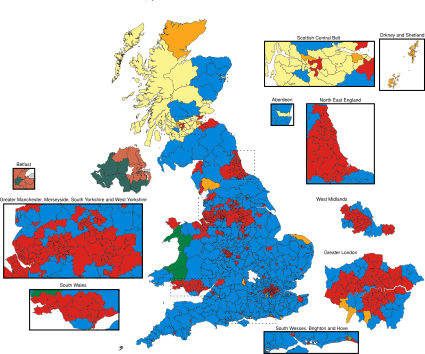 A map of UK parliamentary constituencies * Figure does not include the Speaker of the House of Commons John Bercow, who was included in the Conservative seat total by some media outlets. | |||||||||||||||||||||||||||||||||||||||||||||||||||||||||||||||||||||||||||||||||||||||||||||||||||||
 Composition of the House of Commons after the election | |||||||||||||||||||||||||||||||||||||||||||||||||||||||||||||||||||||||||||||||||||||||||||||||||||||
| |||||||||||||||||||||||||||||||||||||||||||||||||||||||||||||||||||||||||||||||||||||||||||||||||||||
| |||||||||||||||||||||||||||||||||||||||||||||||||
All 615 seats in the House of Commons 308 seats needed for a majority | |||||||||||||||||||||||||||||||||||||||||||||||||
|---|---|---|---|---|---|---|---|---|---|---|---|---|---|---|---|---|---|---|---|---|---|---|---|---|---|---|---|---|---|---|---|---|---|---|---|---|---|---|---|---|---|---|---|---|---|---|---|---|---|
| Turnout | 76.1%, | ||||||||||||||||||||||||||||||||||||||||||||||||
| |||||||||||||||||||||||||||||||||||||||||||||||||
| |||||||||||||||||||||||||||||||||||||||||||||||||
George W. Bush | |
|---|---|
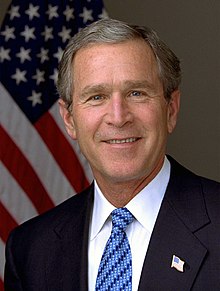 Official portrait, 2003 | |
| 43rd President of the United States | |
| In office January 20, 2001 – January 20, 2009 | |
| Vice President | Dick Cheney |
| Preceded by | Bill Clinton |
| Succeeded by | Barack Obama |
| 46th Governor of Texas | |
| In office January 17, 1995 – December 21, 2000 | |
| Lieutenant |
|
| Preceded by | Ann Richards |
| Succeeded by | Rick Perry |
| Personal details | |
| Born | George Walker Bush July 6, 1946 New Haven, Connecticut, U.S. |
| Political party | Republican |
| Spouse | |
| Children | |
| Parents | |
| Relatives | Bush family |
| Residence(s) | Prairie Chapel Ranch, Crawford, Texas, U.S. |
| Alma mater | |
| Occupation |
|
| Civilian awards | List of honors and awards |
| Signature |  |
| Website | |
| Nickname |
|
| Military service | |
| Branch/service | |
| Years of service | 1968–1974 |
| Rank | First Lieutenant |
| Unit | |
| Military awards | [better source needed] |
| |||||||||||||||||||||
| |||||||||||||||||||||
| |||||||||||||||||||||
| No. | Picture | Name
(Birth–Death) |
Term of office | Political Party | Cabinet | Ref. | ||
|---|---|---|---|---|---|---|---|---|
| Took office | Left office | Time in office | ||||||
| Prime Minister of the Federation of Nigeria | ||||||||
| 1 |  |
Hans Milongo (1912–1966) |
7 August 1948 | 10 September 1950 | 2 years, 34 days | Social Democratic Party | Milongo I | |
| (1) |  |
Baron Von Truppen (1912–1966) |
10 September 1950 | 30 July 1960 | 9 years, 324 days | National Party | ||
| Post abolished (15 January 1966 – Present) | ||||||||
| No. | Portrait | Name (Birth–Death) Constituency |
Election (Parliament) |
Term of office | Political party |
Ministry | Ref. | ||
|---|---|---|---|---|---|---|---|---|---|
| Took office | Left office | Time in office | |||||||
| 1 | 
|
Edmund Barton (1849–1920) MP for Hunter, NSW |
1901 (1st) | 1 January 1901 |
24 September 1903 |
2 years, 266 days | Protectionist | Barton | [22] |
| 2 | 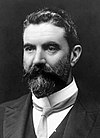
|
Alfred Deakin (1856–1919) MP for Ballaarat, Vic[m] |
— (1st) | 24 September 1903 |
27 April 1904 |
216 days | Protectionist | 1st Deakin | [23] |
| 1903 (2nd) | |||||||||
| 3 | 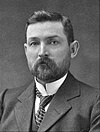
|
Chris Watson (1867–1941) MP for Bland, NSW |
— (2nd) | 27 April 1904 |
18 August 1904 |
113 days | Labor | Watson | [24] |
| 4 | 
|
George Reid (1845–1918) MP for East Sydney, NSW |
— (2nd) | 18 August 1904 |
5 July 1905 |
321 days | Free Trade | Reid | [25] |
| (2) | 
|
Alfred Deakin (1856–1919) MP for Ballaarat, Vic[m] |
— (2nd) | 5 July 1905 |
13 November 1908 |
3 years, 131 days | Protectionist | 2nd Deakin | [23] |
| 1906 (3rd) | |||||||||
| 5 | 
|
Andrew Fisher (1862–1928) MP for Wide Bay, Qld |
— (3rd) | 13 November 1908 |
2 June 1909 |
201 days | Labor | 1st Fisher | [26] |
| (2) | 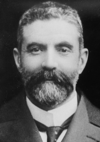
|
Alfred Deakin (1856–1919) MP for Ballaarat, Vic[m] |
— (3rd) | 2 June 1909 |
29 April 1910 |
331 days | Liberal | 3rd Deakin | [23] |
| (5) | 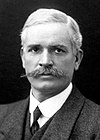
|
Andrew Fisher (1862–1928) MP for Wide Bay, Qld |
1910 (4th) | 29 April 1910 |
24 June 1913 |
3 years, 56 days | Labor | 2nd Fisher | [26] |
| 6 | 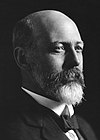
|
Joseph Cook (1860–1947) MP for Parramatta, NSW |
1913 (5th) | 24 June 1913 |
17 September 1914 |
1 year, 85 days | Liberal | Cook | [27]
|
- ^ Cite error: The named reference
ElectionDaywas invoked but never defined (see the help page). - ^ jaaa
- ^ While various other dates have been proposed as the date on which World War II began or ended, this is the time span most frequently cited.
- ^ shut up lol.[7][8]
- ^ So that all figures add up to 100%, people listed as Multiracial are not counted again as one of their other self-identified races.
- ^ The historical and informal demonym Yankee has been applied to Americans, New Englanders, or northeasterners since the 18th century.
- ^ Cite error: The named reference
largestcountrywas invoked but never defined (see the help page). - ^ Cite error: The named reference
pop clockwas invoked but never defined (see the help page). - ^ Cite error: The named reference
popwas invoked but never defined (see the help page). - ^ Cite error: The named reference
timewas invoked but never defined (see the help page). - ^ See Date and time notation in the United States.
- ^ Cite error: The named reference
drivewas invoked but never defined (see the help page). - ^ a b c Ballarat was spelt Ballaarat until the 1973 election.
- ^ a b Cite error: The named reference
FECwas invoked but never defined (see the help page). - ^ Cheney, David M. "Second Vatican Council". Catholic Hierarchy. Retrieved 18 May 2011.
- ^ O'Malley 2008.
- ^ 36 U.S.C. § 302
- ^ "The Great Seal of the United States" (PDF). U.S. Department of State, Bureau of Public Affairs. 2003. Retrieved 12 February 2020.
- ^ 36 U.S.C. § 302
- ^ Cobarrubias 1983, p. 195.
- ^ García 2011, p. 167.
- ^ "2020 Census Illuminates Racial and Ethnic Composition of the Country". United States Census. Retrieved 13 August 2021.
- ^ "Race and Ethnicity in the United States: 2010 Census and 2020 Census". United States Census. Retrieved 13 August 2021.
- ^ "A Breakdown of 2020 Census Demographic Data". NPR. 13 August 2021.
- ^ "About Three-in-Ten U.S. Adults Are Now Religiously Unaffiliated". Measuring Religion in Pew Research Center's American Trends Panel. Pew Research Center. 14 December 2021. Retrieved 21 December 2021.
- ^ Compton's Pictured Encyclopedia and Fact-index: Ohio. 1963. p. 336.
- ^ "Surface water and surface water change". Organisation for Economic Co-operation and Development (OECD). 2015. Retrieved 11 October 2020.
- ^ Areas of the 50 states and the District of Columbia but not Puerto Rico nor other island territories per "State Area Measurements and Internal Point Coordinates". Census.gov. August 2010. Retrieved 31 March 2020.
reflect base feature updates made in the MAF/TIGER database through August, 2010.
- ^ "New Vintage 2021 Population Estimates Available for the Nation, States and Puerto Rico". Census.gov. U.S. Census Bureau.
- ^ "Census Bureau's 2020 Population Count". United States Census. Retrieved 26 April 2021. The 2020 census is as of April 1, 2020.
- ^ a b c d "World Economic Outlook Database, October 2022". IMF.org. International Monetary Fund. October 2022. Retrieved 11 October 2022.
- ^ Bureau, US Census. "Income and Poverty in the United States: 2020, Table A-3". Census.gov. Retrieved 26 July 2022.
{{cite web}}:|last=has generic name (help) - ^ "Human Development Report 2021/2022" (PDF). United Nations Development Programme. 8 September 2022. Retrieved 8 September 2022.
- ^ "General Election 2017: full results and analysis". UK Parliament (second ed.). 29 January 2019. Retrieved 6 April 2022.
- ^ Rutledge, Martha. "Barton, Sir Edmund (1849–1920)". Australian Dictionary of Biography. Australian National University. Retrieved 21 October 2008.
- ^ a b c Norris, R. (1981). "Deakin, Alfred (1856–1919)". Australian Dictionary of Biography. Canberra: National Centre of Biography, Australian National University. ISBN 978-0-522-84459-7. ISSN 1833-7538. OCLC 70677943. Retrieved 21 October 2008.
- ^ Nairn, Bede (1990). "Watson, John Christian (1867–1941)". Australian Dictionary of Biography. Canberra: National Centre of Biography, Australian National University. ISBN 978-0-522-84459-7. ISSN 1833-7538. OCLC 70677943. Retrieved 21 October 2008.
- ^ McMinn, W. G. Reid, Sir George Houstoun (1845–1918). Australian National University. Retrieved 21 October 2008.
{{cite book}}:|work=ignored (help) - ^ a b Murphy, D. J. Fisher, Andrew (1862–1928). Australian National University. Retrieved 21 October 2008.
{{cite book}}:|work=ignored (help) - ^ Crowley, F. K. Cook, Sir Joseph (1860–1947). Australian National University. Retrieved 21 October 2008.
{{cite book}}:|work=ignored (help)
Cite error: There are <ref group=n> tags on this page, but the references will not show without a {{reflist|group=n}} template (see the help page).













